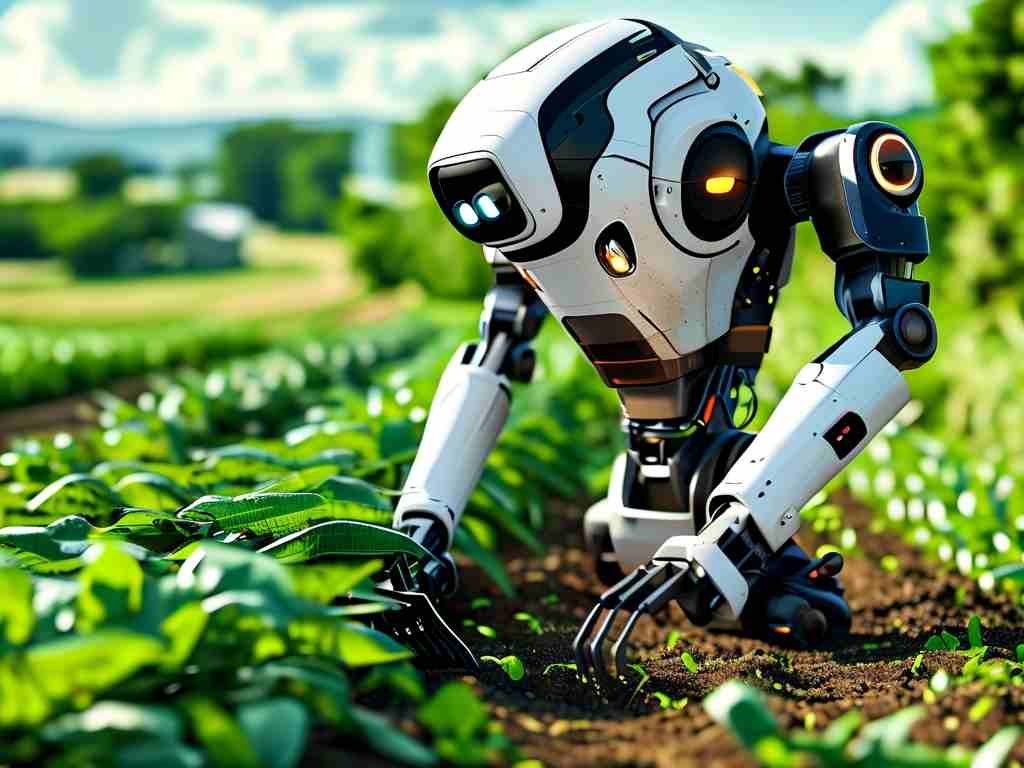As urbanization accelerates and smart agriculture evolves, autonomous weeding robots have emerged as essential tools for modern landscaping and crop management. These machines combine mechanical engineering, artificial intelligence, and environmental sensing to perform precise vegetation control. This article explores the foundational technologies driving these devices and their practical implementations.

Navigation and Spatial Awareness
At the heart of every weeding robot lies its navigation system. Most commercial models employ a hybrid approach combining GPS positioning with visual recognition. For instance, the RoboMow RX-2000 uses RTK-GPS (Real-Time Kinematic Global Positioning System) to achieve centimeter-level accuracy, while simultaneously processing live camera feeds to identify boundary markers. This dual-layer localization ensures reliable operation even in signal-challenged environments like dense orchards or walled gardens.
Advanced units integrate LiDAR (Light Detection and Ranging) sensors to create dynamic 3D maps. The GreenSight AGX model demonstrates this by generating real-time terrain models that distinguish between wanted plants and invasive weeds. Machine learning algorithms trained on botanical databases enable the robot to classify vegetation types with 92% accuracy under varying light conditions.
Power and Energy Management
Efficient energy utilization distinguishes high-performance weeding robots from basic models. Lithium iron phosphate (LiFePO4) batteries dominate current designs due to their thermal stability and 2,000+ cycle lifespan. The WeedWhacker Pro series exemplifies this with its 48V/20Ah battery pack delivering 8 hours of continuous operation.
Solar-assisted charging systems are gaining traction in open-field applications. The SunCutter X3 features flexible photovoltaic panels that extend runtime by 35% in daylight conditions. For indoor vertical farms, wireless charging pads embedded in workstations enable autonomous power replenishment without human intervention.
Cutting Mechanisms and Adaptability
Blade engineering varies significantly across applications. Residential models like the LawnMaster QT typically use dual nylon strings for grass trimming, while agricultural robots employ hardened steel rotary blades capable of slicing through 2cm-thick weed stems. The AgriBot 5000 series implements force-sensitive cutting heads that adjust rotational speed (200-2,500 RPM) based on vegetation density, reducing energy waste by up to 40%.
Height adjustment systems ensure precision across uneven terrain. Hydraulic lift mechanisms in the TerraCutter H7 allow 15cm of vertical travel, maintaining optimal cutting height despite ground irregularities. For delicate environments like botanical gardens, non-contact alternatives like microwave weed eradication are being tested, though these remain experimental due to higher power requirements.
Obstacle Avoidance and Safety Protocols
Collision prevention relies on multi-sensor fusion. Ultrasonic sensors detect solid objects within 3 meters, while millimeter-wave radar identifies smaller obstacles like garden tools. The SafeCut AI platform combines these inputs with predictive algorithms to recalculate paths within 0.2 seconds of detecting an obstruction.
Emergency stop mechanisms adhere to ISO 13849 safety standards. Pressure-sensitive bumpers on the Gardena Sileno series trigger immediate shutdown when encountering resistance exceeding 15 Newtons. For child and pet safety, infrared motion sensors activate alert tones and slow movement to 0.3m/s when detecting nearby heat signatures.
Future Developments
Emerging technologies promise to enhance weeding robots' capabilities. 5G connectivity enables fleet coordination across large areas, as demonstrated in John Deere's 2023 vineyard trial where 12 robots worked synchronously across 50 hectares. Quantum dot sensors under development could improve plant disease detection accuracy to 98% by analyzing subtle chlorophyll variations.
Ethylene gas emission monitoring represents another frontier. Experimental models from Bosch AgriTech can identify stressed plants through volatile organic compound analysis, allowing targeted treatment before weeds overtake crops.
As these technologies mature, autonomous weeding robots are transitioning from supplemental tools to central components in sustainable agriculture. Their ability to reduce herbicide usage by 70-90% while maintaining crop yields positions them as critical solutions for addressing global food security challenges.









